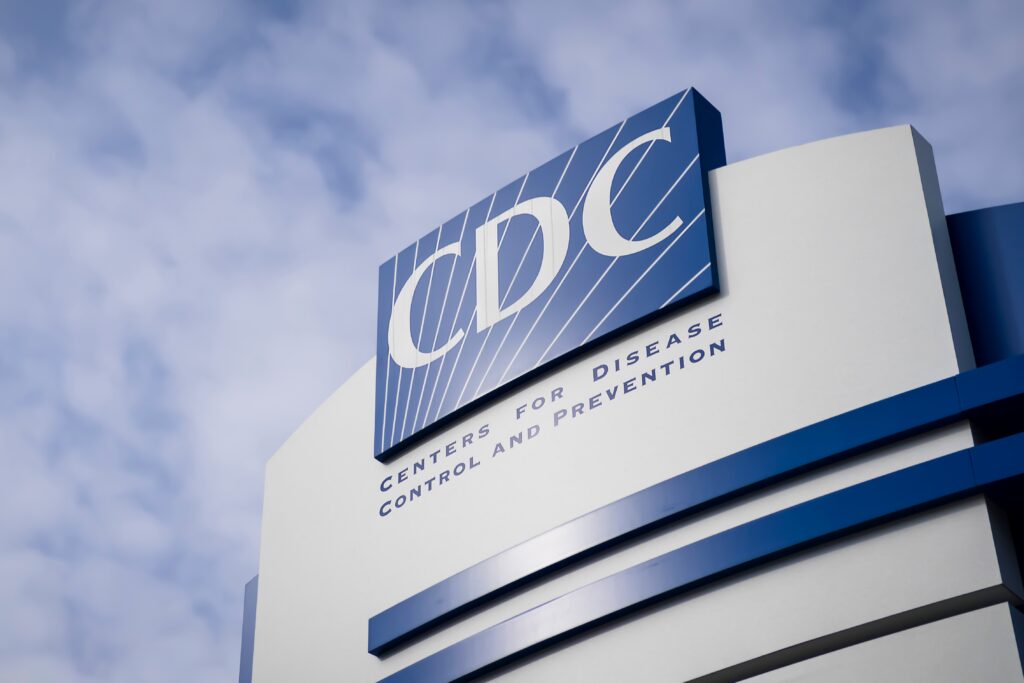Australia is a step closer to having its own national agency to inform and co-ordinate public health responses – a permanent Australian Centre for Disease Control (CDC).
Long-awaited draft legislation was tabled in parliament last week to create this permanent CDC, which is set to start from January 1 2026.
It’s a milestone for public health in Australia.
This national agency will help protect us against immediate issues including avian influenza (bird flu), falling immunisation coverage and health misinformation. Down the track it’s expected to address other areas of public health, such as cancer, diabetes and heart disease.
But there’s much we don’t know about how the agency will run. We also need to ensure safeguards are in place against political interference in public health, which we’re seeing play out in the United States.
Almost 40 years in the making
Public health experts have been calling for an Australian CDC since at least 1987.
At that time, the Australasian Epidemiological Association noted the fragmentation of disease control efforts across the country. It was particularly concerned about the lack of timely data to inform the public health response to HIV/AIDS.
More than three decades later, the COVID-19 pandemic also exposed weaknesses in Australia’s public health system.
The COVID-19 Response Inquiry found an Australian CDC could have helped. It could have been a trusted voice for governments and the public; it could have clearly summarised evidence and data as it became available to inform policy and the public; and it could better prepare and co-ordinate responses to future pandemics.
How will the Australian CDC help?
The federal government has committed more than A$250 million over four years to fund the CDC’s overall activities.
But how will a new national agency help tackle public health challenges? Let’s take vaccination as an example, which is already coordinated nationally.
Under the National Immunisation Program, all levels of government have roles to play. The federal government assesses and buys vaccines; state and territory governments distribute vaccines; and all levels of government fund the providers who administer vaccines. Independent experts, such as the Australian Technical Advisory Group on Immunisation (of which I’m a past member), develop advice on immunisation, supported by the National Centre for Immunisation Research and Surveillance.
However, the lack of a CDC highlights some of the current system’s weaknesses.
States and territories collect data about vaccine-preventable diseases, but not all data is shared nationally. So we don’t always have a complete national picture.
Funding for vaccines can also vary across the country. For example, all people aged six months and older in Queensland and Western Australia could get a free flu vaccine in 2025. But eligibility in most other jurisdictions is limited to high-risk groups.
An Australian CDC could help with providing evidence on what the best strategy would be to best reduce illnesses due to influenza (including vaccination but also other potential measures), develop national communications to increase vaccination uptake, and evaluate outcomes to inform ongoing control efforts.

How can we protect against political interference?
As recent experience in the US reminds us, government agencies can be subject to political interference.
Allegations or evidence of political interference have affected or threaten to affect US policies on topics as diverse as mRNA vaccines, scientific research, foreign aid for HIV/AIDS and alcohol labelling.
But political interference in the US isn’t just a recent phenomenon. In the 1990s, political opposition led to the US CDC having to stop examining gun violence, clearly a major public health issue.
Closer to home, many in the public health community remember the short-lived Australian National Preventive Health Agency. This was established in 2011 but de-funded a few years later.
Ultimately, the CDC will need to have a close relationship with government. It will need appropriate funding, to provide input into government policies, and to be accountable for its work.
Yet it needs to be independent and transparent. Safeguards in the draft legislation mean, for example, the CDC director-general must, under most circumstances, publish advice to government and the associated rationale and evidence.
So if any governments make decisions against the advice of the CDC, this would be clear. This is similar to the Victorian pandemic legislation – the health minister makes decisions but is required to consider and release advice from the chief health officer.
So early signs for the Australian CDC are positive.
What don’t we know yet?
Many questions remain. The draft legislation is understandably vague in defining the scope of public health so as not to limit its activities.
For example, would hospital-acquired infections be regarded as a public health issue (and would come under the remit of the CDC), or a health-care quality issue (and be addressed by another agency)?
The relationship of the Australian CDC to existing agencies, such as the Australian Commission on Safety and Quality in Health Care and the Australian Institute for Health and Welfare, will need to be clarified.
We don’t yet have timelines of what the CDC plans to achieve, nor a strategic and implementation plan of how to get there. While infectious diseases are understandably a priority area, how soon will the CDC get into other important areas such as cancer, diabetes and heart disease?
We don’t know the CDC’s role in setting priority areas for research funding, how resources will be allocated within the CDC, and there is no mention of its role in training the future public health workforce.
But answers to these and other questions will come with time.
Allen Cheng is a professor of infectious diseases with Monash University.
This article is republished from The Conversation under a Creative Commons license. Read the original article.
The statements or opinions expressed in this article reflect the views of the authors and do not necessarily represent the official policy of the AMA, the MJA or InSight+ unless so stated.
Subscribe to the free InSight+ weekly newsletter here. It is available to all readers, not just registered medical practitioners.
If you would like to submit an article for consideration, send a Word version to mjainsight-editor@ampco.com.au.

 more_vert
more_vert
I was there at the inaugural meeting in Canberra to discuss an Australian CDC as a representative of the RACGP.
OK, better late than never but… Forty years is a long time to wait.
Requirements of public health surveillance system include: what information and sources can best address surveillance goals and can the system interact with other information systems?; do data collection methods allow data to be used effectively, speedily and easily?; does the system encompass ways to share data across different technology platforms [e.g. IT] and have the ability to identify and remedy data-quality problems while ensuring data privacy and security?; and, in terms of data analyses, are there appropriate statistical applications aided by advanced computational resources for large data-sets or complex analyses with the ability to point to aberrations in health events? [Savel and Foldy 2012, 20-21].
The system should also be able to determine the usefulness of comparing information from one surveillance program with other data sets for new ideas and views and, to combine series of different data-sets to provide a context for interpretation; the system should enable the easy accessibility of data with information finding to be easy and fast and, allow information to be readily displayed / shared for users; and, should ensure that data flows into information systems that support public health interventions [Savel and Foldy 2012, 20-21].
Surveillance can directly measure what is going on in the population, so it is useful both for measuring the need for interventions and targeting resources and, for directly measuring and evaluating the effects of interventions [Nsubuga, White, Thacker et al. 2006].
The goals of surveillance often differ at the various administrative levels of the public health system. Surveillance data are used to allocate resources and evaluate the impact of control of prevention strategies / programs. At the local level, the use of surveillance to initiate basic public health investigations and commence specific control activities predominates for infectious diseases and environmental hazards. In contrast, at the national level the focus is more on monitoring trends, measuring the effectiveness of specific interventions, and conducting more complicated analysis to elucidate risk factors. At the local level analytic capacity is somewhat more limited than at the national level. At the state level, public health agencies typically share both perspectives.
Controlling and preventing diseases based on data collected through surveillance demands attention. Often actions must be immediate—within hours—in order to prevent large epidemics and deaths from, for instance, cholera. Shigella, for instance has the capacity for the occurrence of secondary and tertiary transmission within days of onset [Rosenberg. Marr and Gangarosa 1997]. At other times, control and prevention activities are long-term responses to information about diseases (such as malaria and non-communicable diseases) [Garcia-Abreu, Halparin and Danel 2002, 3-4]. Indeed, the CDC [CDC 2001, Section D.2.h] suggests the need for rapidity of response depends on the nature of the event under surveillance and the objectives of that system. Surveillance systems must promote timeliness. Automated data systems allow timeliness.
Statistical strategies will vary according to the output produced or the conclusions to be drawn from collected data [Nsubuga, White, Thacker et al. 2006]. For instance, population-based surveys need to be conducted regularly [e.g. the demographic and health surveys that many developing countries conduct every few years]. Here consideration needs given to: the sample size, based on efficiency and the epidemiologic characteristics of the health condition under surveillance; the need to avoid bias; the frequency of the survey; the use of comparable sampling strategies and standard questionnaires; and clear definition of the population group to which the results can be generalized. In laboratory-based surveys, laboratory registries allow for the analysis of the incidence / prevalence of target conditions [e.g. diabetes mellitus] as well as trends in the level of control. Laboratory data on chronic conditions can be theoretically linked together at the individual patient level. If patient-identifiers can be matched, a chronological record of each patient’s laboratory results is able to be analyzed as well as aggregated to the population level.